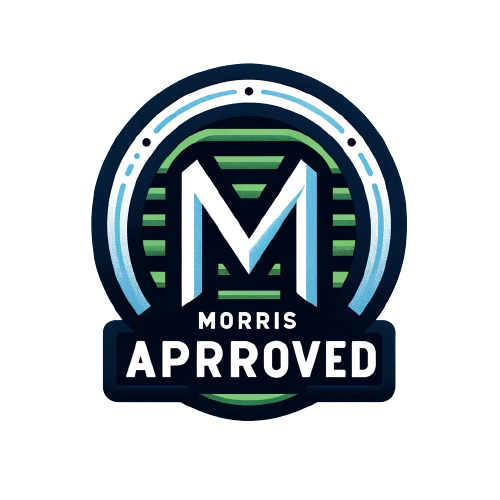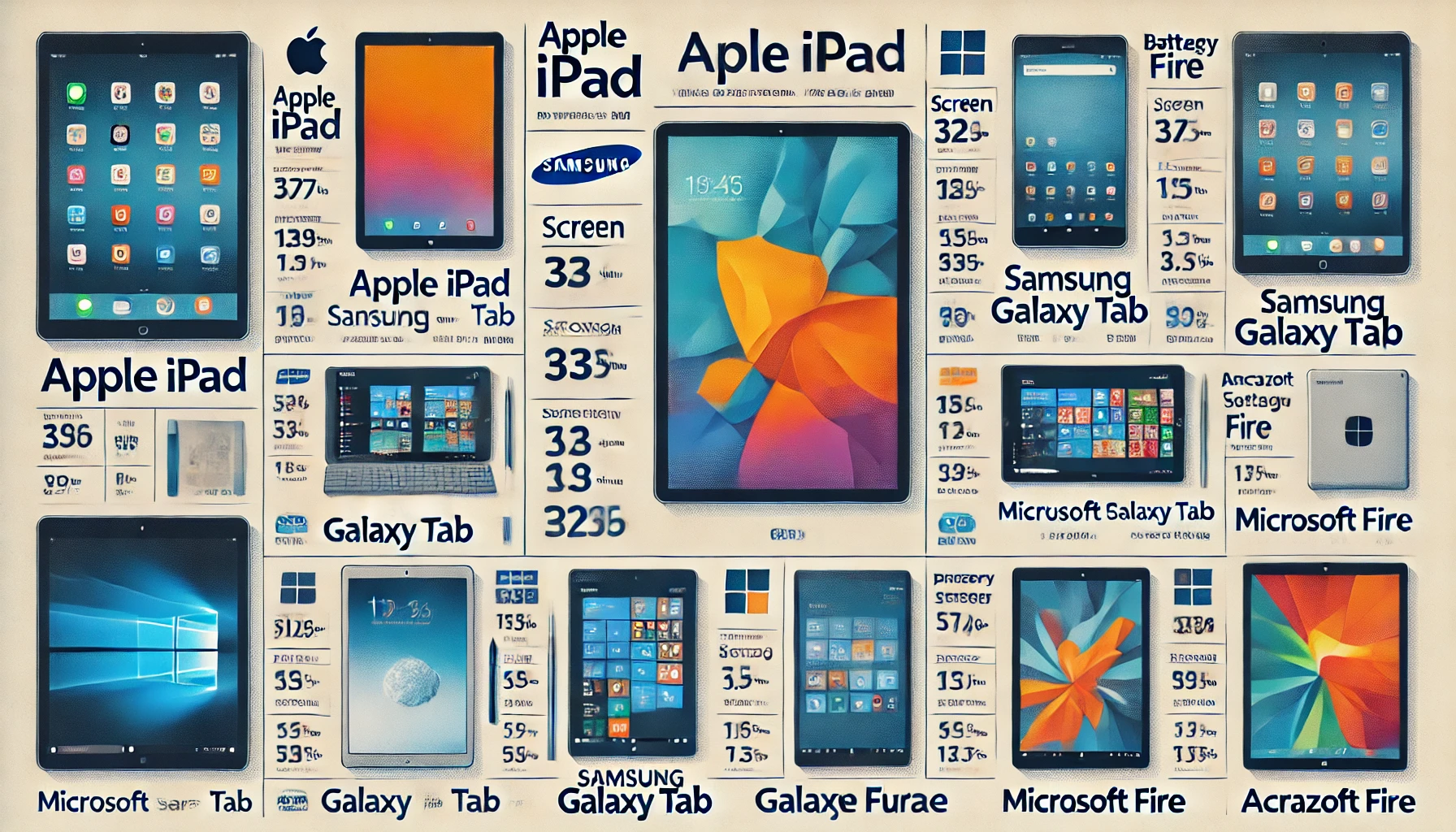Popular Tablet Brands
Tablets have revolutionized the way we interact with technology, offering a seamless blend of portability, performance, and versatility. With so many brands and models on the market, choosing the right tablet can be daunting. In this article, we’ll break down the features, strengths, and weaknesses of some of the most popular tablet brands to help you make an informed decision.
Apple iPad: The Gold Standard
Apple’s iPad has long been the benchmark in the tablet market. Known for its sleek design, robust build quality, and a powerful ecosystem of apps, the iPad is a favorite among professionals, creatives, and everyday users alike.
Key Features:
- Retina Display: Offers stunning clarity and color accuracy, making it ideal for photo editing, gaming, and media consumption.
- A-Series Chip: The powerful processors ensure smooth performance even with demanding apps.
- iOS Ecosystem: Seamless integration with other Apple products and services like iCloud, Apple Music, and the App Store.
- Apple Pencil Support: Excellent for artists and note-takers.
Pros:
- Exceptional build quality
- Intuitive user interface
- Extensive app ecosystem
Cons:
- Premium price point
- Limited customization options
Samsung Galaxy Tab: Versatility and Power
Samsung’s Galaxy Tab series offers a range of tablets that cater to different needs and budgets. Known for their vivid displays and Android flexibility, these tablets are great for both work and play.
Key Features:
- Super AMOLED Display: Provides deep blacks and vibrant colors, perfect for watching videos and gaming.
- S Pen: Included with some models, it offers a natural writing and drawing experience.
- DeX Mode: Transforms the tablet into a PC-like experience, enhancing productivity.
- Expandable Storage: Unlike iPads, Galaxy Tabs often come with the option to expand storage via microSD cards.
Pros:
- High-quality display
- S Pen included with many models
- Versatile Android operating system
Cons:
- Software updates can be slow
- Battery life varies across models
Microsoft Surface: A Laptop in Tablet Form
The Microsoft Surface line blurs the line between tablets and laptops, offering powerful hardware and full Windows OS capability. It’s an excellent choice for those who need a tablet for professional use.
Key Features:
- Full Windows 10/11: Runs desktop applications, making it a powerful productivity tool.
- Type Cover: A detachable keyboard that turns the tablet into a laptop.
- Surface Pen: Highly responsive and perfect for note-taking and creative work.
- Multiple Configurations: Available with various processors and storage options to suit different needs.
Pros:
- Full desktop OS capability
- Versatile and powerful hardware
- Excellent for productivity
Cons:
- It is expensive compared to other tablets
- It can be overkill for casual users
Amazon Fire: Affordable and Family-Friendly
Amazon’s Fire tablets are known for their affordability and family-friendly features. While they may not compete with high-end tablets in terms of performance, they offer great value for money.
Key Features:
- Fire OS: A modified version of Android that integrates seamlessly with Amazon services.
- Alexa Integration: Voice control and smart assistant features built-in.
- Parental Controls: Robust features that make it easy to manage what children can access.
- Prime Content: Easy access to Amazon’s vast library of books, movies, and shows.
Pros:
- Highly affordable
- Excellent for media consumption
- Family-friendly features
Cons:
- Limited app selection compared to standard Android tablets
- Lower performance and build quality
Lenovo Tab: Budget-Friendly Performance
Lenovo’s Tab series offers a variety of affordable tablets that don’t skimp on features. They are great for students and casual users who need a reliable device without breaking the bank.
Key Features:
- Varied Lineup: From entry-level to mid-range, there’s a Lenovo Tab for every budget.
- Decent Performance: While not top-tier, they offer reliable performance for everyday tasks.
- Long Battery Life: Many models boast impressive battery longevity.
- Dolby Atmos Sound: Enhances the media experience with better audio quality.
Pros:
- Affordable
- Good battery life
- Reliable performance for the price
Cons:
- Not as powerful as high-end tablets
- Build quality can be inconsistent
Finding the Perfect Tablet
When searching for the best tablet, it’s crucial to consider your primary needs. Are you looking for a device that excels in media consumption, productivity, or portability? Apple iPads are unparalleled in their app ecosystem and build quality, making them ideal for a wide range of tasks. Samsung Galaxy Tabs offer incredible versatility with their Android OS and stunning displays, perfect for both work and entertainment. For those who need a more powerful device for professional use, the Microsoft Surface lineup provides the best of both worlds, combining tablet portability with laptop functionality. On the more affordable end, Amazon Fire tablets are perfect for families and casual users, while Lenovo Tabs offer reliable performance without breaking the bank. By understanding these differences, you can choose the tablet that best suits your lifestyle and needs.
Conclusion: Making the Right Choice
Choosing the right tablet depends largely on your individual needs and preferences. Whether you prioritize high performance, versatility, or affordability, there’s a tablet out there for you. Apple, Samsung, Microsoft, Amazon, and Lenovo each offer unique strengths that cater to different user bases. By considering the features and pros and cons of each brand, you can make an informed decision and find the perfect tablet to enhance your digital experience.
Informative List: Key Considerations When Choosing a Tablet
- Performance Needs: Determine what tasks you’ll be using the tablet for, such as gaming, professional work, or casual browsing.
- Operating System: Choose between iOS, Android, or Windows based on your ecosystem preference and compatibility with other devices.
- Budget: Set a budget and look for tablets that offer the best value for your money within that range.
- Display Quality: Consider the display size and resolution, especially if you’ll be using the tablet for media consumption or creative work.
- Accessories and Support: Look into available accessories like styluses and keyboards, and check the manufacturer’s support policies.
In conclusion, the world of tablets is vast and varied, with something to offer everyone. Whether you’re an Apple enthusiast, an Android fan, a Windows power user, or someone looking for budget-friendly options, understanding the strengths and weaknesses of each brand will help you find the perfect tablet for your needs.

